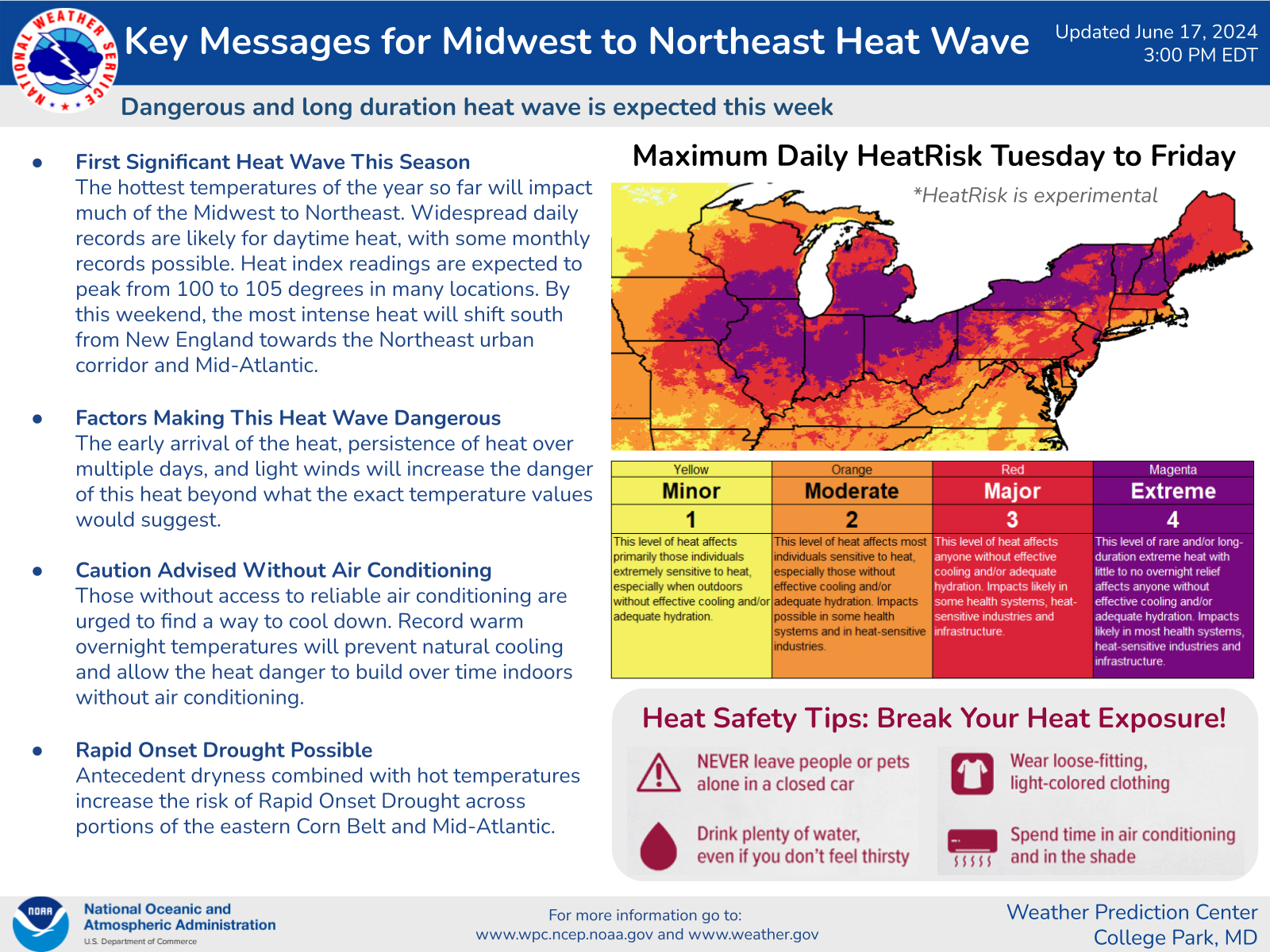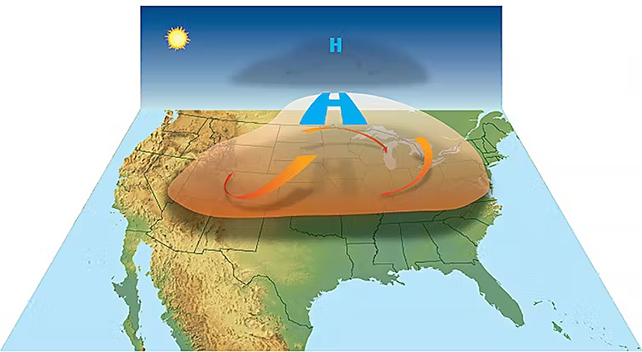Millions at Risk as Heat Dome Over The US Soon to Send Temperatures Soaring
More than 260 million people are expected to cope with challenging temperatures over the next week as the first significant heatwave of summer is set to already break records across northeastern US.
“The duration of this heat wave is notable and potentially the longest experienced in decades for some locations,” the National Weather Service (NWS) warns.
A heat dome is predicted to move east from the Great Lakes towards New England, bringing with it scorching temperatures of up to 41 °C (105 °F). Temperatures overnight will provide little respite, as they’re expected to remain in the mid 20s °C (70s °F).

Heat domes form when high pressure atmospheric systems hover over one area for extended periods trapping warm air beneath them. The heat trap predicted by the NWS in coming days is unusually early and may linger long enough to cause droughts in some regions.
“The early arrival of this magnitude of heat, the duration, abundant sunshine, and lack of relief overnight will increase the danger of this heatwave beyond what the exact temperature values would suggest,” explains the NWS.

Cities in New York, Massachusetts, Pennsylvania, Ohio, Illinois, Indiana, Missouri, and Michigan face extreme risk, where anyone who doesn’t have access to cooling or hydration may face serious health challenges.
Urban areas are particularly prone to hot extremes thanks to the heat island effect, caused by heat-retaining materials used in the construction of roads and other infrastructure and a lack of cooling vegetation.
Experts advise remaining indoors where possible. For those who must venture out, and for vulnerable individuals such as children, the elderly, and those who are pregnant, drinking plenty of water and resting frequently are strongly recommended.
Look out for signs of heat stress such as lethargy in the people around you and check in on any loved ones who might be at greater risk. And never leave vulnerable people or pets in a car.
“Generally, people who are experiencing heat exhaustion aren’t going to recognize it as heat exhaustion because they get tunnel vision,” Michigan Infrastructure and Transportation Association safety director Greg Brooks told The Associated Press.
Temperatures will soar next week from the Midwest to the Northeast, where several dozen record afternoon high and record warm morning lows are set to fall.
Heat is the leading cause of weather-related deaths most years. Take it seriously.https://t.co/VyWINDk3xP pic.twitter.com/0vd41f47CV
— National Weather Service (@NWS) June 14, 2024
Despite being preventable, the leading weather-related deaths in the US are caused by heat. Heat related deaths are rising as heat waves like this one occur more regularly thanks to worsening human-induced climate change.
Extreme heat events are also increasing in their intensity and duration, bringing along greater fire danger too.
